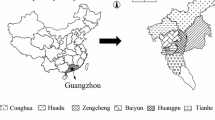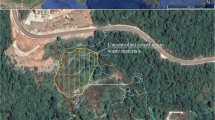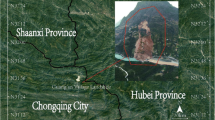Summary
The High Island scheme in Hong Kong has involved the construction of two dams 95 m high founded on the sea bed, and 40 km of tunnels. Geological mapping was carried out as part of the site investigation and later during construction.
The scheme is in an area underlain mainly by hard igneous rocks, rhyolitic volcanics and granite. The paper describes the basis for mapping in a region where the geological variables of engineering significance are the effects of weathering and fracture systems. Different grade scales were used to describe rock material and rock mass decomposition. Rock material weathering grade was the main basis for the site investigation mapping and rock mass condition for mapping during construction.
Examples are given of the maps prepared and the use made of this information. The site investigation mapping was of relevance to final design selection of tunnel alignments, siting of engineering structures, and operation of quarries. Engineering geological maps were included as part of the tender documents.
During construction the rock mass zone mapping was a key element in deciding tunnel supports and dam cut-off treatment. These maps provide part of the construction record necessary for future monitoring of the structures.
Résumé
Le projet de High Island à Hong Kong a entraîné la construction de deux barrages de 95 mètres de hauteur sur le fond marin, ainsi que 40 km de tunnels. Un levé de carte géologique a été entrepris en tant que partie de la reconnaissance du site, et plus tard pendant la construction.
Le projet est dans une région formée de couches souterraines de roches ignées dures, rhyolitiques et granitiques. L'exposé décrit la base de la cartographie dans une région où les variables géotechniques sont les effets de l'altération météorique et les systèmes de fractures. Plusieurs degrés ont été utilisés pour la description de la matière rocheuse et la décomposition de la masse rocheuse. Le degré d'altération météorique de la matière rocheuse a été le facteur principal pour la cartographie de reconnaissance du site; de même l'état de la masse rocheuse pour la cartographie pendant la construction.
On donne des exemples des cartes ainsi préparées et de l'utilisation de cette documentation. La cartographie de reconnaissance du site était liée à une étude finale pour le choix du tracé des tunnels, de l'emplacement des ouvrages d'art et des exploitations de carrières. Les cartes géotechniques ont été jointes du dossier d'appels d'offres.
Pendant la construction, la cartographie de la zone de la masse rocheuse a été un élément clé dans la décision concernant les supports du tunnel et le traitement de la parafouille du barrage. Ces cartes fournissent une partie de la documentation nécessaire pour la future instrumentation des ouvrages.
Similar content being viewed by others
References
ALLEN P.M.—STEPHENS E.A. (1971): Report on the geological survey of Hong Kong. Govt. Printer Hong Kong 107 pp.
ANON. (1972): The preparation of maps and plans in terms of engineering geology. Q.JI. Engng Geol. 5, 295–382.
ANON. (1977): The description of rock masses for engineering purposes. Q. JI. Engng Geol, 10, 355–388.
DEARMAN W.R.—FOOKES P.G. (1974): Engineering geological mapping. Q. JI. Engng Geol, 7, 223–256.
FANSHAWE H.G.—WATKINS M.D. (1971): A sparker survey used to select a marine dam site in Hong Kong. Q. Jl. Engng Geol, 4, 25–40.
LITTLE A.L. (1967): Laterites. Proc. Third Asian Reg. Conf. on Soil Mechanics and Foundation Engng, 61–71.
NEWBERY J. (1970): Engineering geology in the investigation and construction of the Batang Padang hydro-electric scheme, Malaysia. Q. Jl. Engng Geol. 3, 151–182.
PENDER E.B.—HOSKING A.D.—MATTNER R.H. (1963): Grouted rock bolts for permanent support of major underground works. Jl Instn. Engrs Australia, 35, 129–150.
TERZAGHI K. (1946): Introduction to tunnel geology in: PROCTOR R.V.—WHITE T.L.: Rock tunnelling with steel supports. Commercial Shearing and Stamping Co., Ohio, 271 pp.
VAIL A.J. (1975): The High Island water scheme in Hong Kong. Water Power and Dam Construction, 15–20.
Author information
Authors and Affiliations
Rights and permissions
About this article
Cite this article
Watkins Engineering geological mapping for the high island water scheme in Hong Kong. Bulletin of the International Association of Engineering Geology 19, 166–175 (1979). https://doi.org/10.1007/BF02600471
Published:
Issue Date:
DOI: https://doi.org/10.1007/BF02600471




